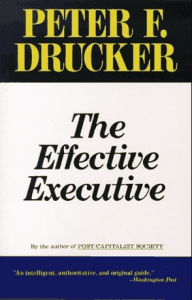Have you ever asked yourself what does environmentally friendly mean to you?

The High Line Park, Manhattan, NYC Diller Scofidio + Renfro
What is your reaction to the consumerism attitude in our contemporary society?
Today everybody wants to talk about pollution, plastic in the ocean and what we can do to save our environment.
This problem is set far far away in the idea of production, consumerism, and accumulation of thing that is nowadays «normal» in our lives.

“I was shocked to see adverts from IKEA, telling that we can buy furniture or accessories and then change idea and throw away and buy new stuff.”
Sara Fontana – founder of reusearchitecture
Also in something that is so close to us, like the fashion industry, it’s clear that we are going in the wrong direction. Behind the bright lights of the shops, there is a huge problem, not only on the environmental point of view.

The documentary by Netflix, the True Cost, shows a very good picture of the situation that fast fashion is creating.
As an example, in one of these countries where cheap clothes are produced, Bangladesh, in 2013 more than 1000 people lost their lives in their workplace, because of the terrible conditions they had to accept in order to get jobs from the big fashion companies.

We are talking about crazy work hours, very little pay and terrible building factories where they are forced to work to saw our jeans.

“In the Western world, we enjoy hours of shopping online or in the stores, in the competition of the lowest prize, happy to save some money buying more and more…
but we are not always conscious of the bigger picture…”
Luckily a very strong reaction to fast fashion has started, in order to understand the whole process behind production and distribution of clothing and make it more transparent for the customers.

What is your reaction?
The first step is to understand and learn how other people have tried to reduce their impact on the environment.
“I found very inspiring finding different experiences and stories of people that actually tried to change their life for more mindful living.”
There are many paths we can choose to be more sensitive in our choices, in terms of what we buy, how we consume, how we use our things, how we live…
A very challenging example is definitely the 333 project, that asks you to reduce your clothes and accessories to a number of 33 items for 3 months.

“It might look easy in words, but I bet if we start to count all the shoes and t-shirt we have…
Therefore, renoucing to express myself with clothing was something that I would not enjoy doing.”
There are examples of people that decide to live in very tiny houses, sometimes self-made and reduced to very little spaces.
For sure, riding a bicycle was one of the few “environmentally friendly” goals we can all reach!
A very similar process of the fashion industry is also happening in architecture, where the commercial branding and design trends are often more powerful than good quality design. We all know about the destiny of most of the old venues in the Olimpic games as well as EXPO pavilions.

It’s really hard today to design buildings with long life and we have several examples of abounded architecture all around the world.
A focus on what is already built
The goal is to identify different approaches to new construction but also relate to our existing heritage.
Nobody really wants to talk about reducing in architecture, but in 2012 at the Venice Biennale, the German pavilion had this interesting title: “Reduce/Reuse/Recycle–Architecture as Resource”.
They develop the analysis of how you can approach an existing building, what we call adaptive reuse, and they show a wide range of projects of reused architecture.
Still, for some, this approach isn’t nearly radical enough. Their goal is actually to stop building.
Their rebellious theory was based on the real calculation of energy use in the hole process of new building construction:
- production of construction materials
- transport to site
- assembly
- energy to run
“It’s really popular to talk about green energy or sustainable architecture, but when you demolish an old structure to build a new “energy efficient building”, you have also to consider in the balance the energy used to demolish and the building waste, where most than 50% of all trash cannot be recycled in any way!”
The American professor Peter F. Drucker, in the 60’, was right:
“It’s quite use less to do with great efficiency what shoud not be done at all…”


A new focus on things already built and the creation of a dialogue between new construction and existing architecture is far more interesting. Give a new character to an architectural element that had lost its function and help it living a new life and have a different impact on our environment.
That is how the project @reusearchitecture started: a web platform, an archive of examples of reuse in architecture, using different approaches and techniques, but with the same intent to give a new life to our existing built heritage.

Conservation – Restoration – Integration
find out more on reusearchitecture
